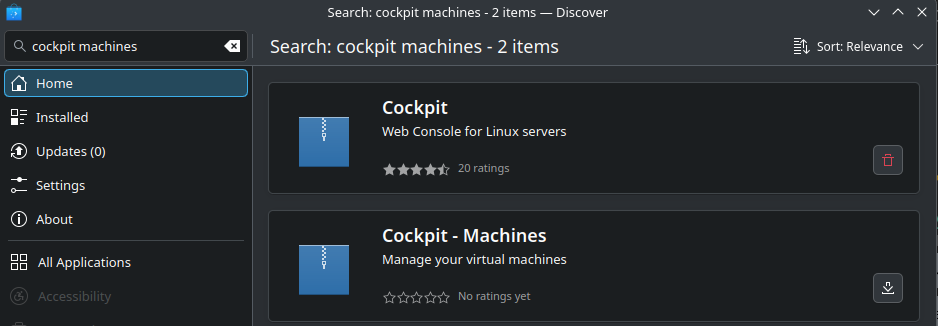Not really sure how dualbooting or vms work at their core. I’m kind of over windows and want to swap, always liked the customizability aspect and have been using Linux more and more for self hosting purposes. Was wondering if I setup linux on my external ssd using a vm if I could change it from vm to a dualboot drive after I’m done setting it up. That way I could setitup and swap to it while keepign my original ssd with my windows install,. and not have to deal with dualbooting and going back and forth while setting up?
Can I make a vm of my current windows machine backup and run that in a linux setup?
My recommendation would be to use clonezilla or a similar tool to make an image of your windows install and save that on the external ssd.
Then I would install Fedora KDE or whatever’s your poison on the internal drive.
If you wanna switch back to windows then you can always use clonezilla, or your tool of choice, to restore the image.
You could also use KVM/Qemu in your linux distro to restore the image into a windows vm.
virt-manager gives you a desktop gui while cockpit + cockpit-machines gives you a nice webui for handling virtual machines in linux.Clonezilla guide, for both linux and windows
https://www.linuxbabe.com/backup/how-to-use-clonezilla-liveBoth Cockpit and Virt-Manager are available in Fedora KDE’s Discover app if you prefer GUI installs:
Cockpit

Virt-Manager

This is good advice imo. Some further comments:
- Its easier to make a vm out of a bare metal or “real” install. It’s much harder to go the other way.
- you seem to have some fear about installing or reinstalling OSs. It’s much easier than redeploying vms. I’d banish those thoughts and jump in. Again the above advice is solid because you can mess up or change your mind, and you can always revert. Cloning a drive and redeploying that image to the original drive is simple.
- dual booting gets a lot of flak. Most of that comes from windows not playing nice with boot partitions when windows is installed on the same drive. Another source of issues is secure boot. If you have two internal drives, installing an os on each one works great. I like turning secure boot off and simply pressing F8 upon boot up if I want to switch. (But you totally can get it working with secure boot and adding other OSs to grub.
no dual boot. just jump in, the water is fine.
Piracy seems harder, like whats the alternative to vfxmed for stuff like houdinifx
What is that
I can’t help with pirating software, your options are going to be heavily limited because most people running Linux would just prefer open source alternatives (like Blender), so it’s far less likely you will find cracked software specifically made for Linux (plus, there is a far smaller userbase). On some quick searching, I did find someone who had issues running Houdini in a VM (for multiple distros), but it worked fine when it was installed natively. I’m not seeing an entry in the WINE database for Houdini, so while you could always try running a Windows version through WINE, given the type of program it is, I highly doubt it would run without issue. I have no recommendations on how to get ahold of a Linux compatible version without a license.
That would definitely be a technical challenge, but also it’s absolutely possible.
I used to do dual-boot Windows + Linux and I could run the Linux installation from a VM in Windows as well as the Windows installation from a VM in Linux.
When rebooting between metal and VM, Windows would always spend a few minutes “doing things” before continuing to boot, but it worked.
Linux would not even fret. It would just boot normally without any complaints.
I don’t remember exactly which distro I had at the time, but probably it was Linux Mint.



